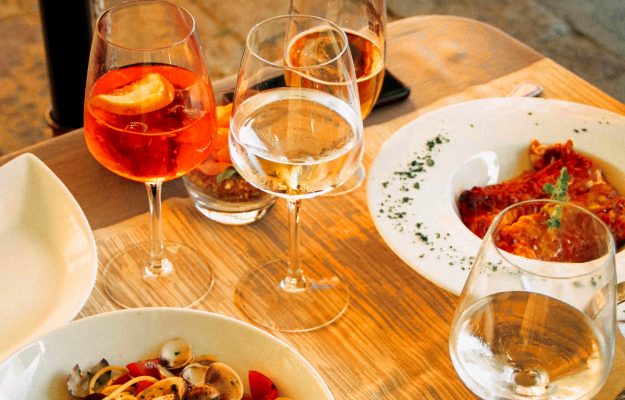Exports and consumption out-of-home are growing, that, in value, exceed pre-pandemic levels, while domestic consumption is declining, with large-scale retail purchases contracting after the boom recorded in the months of lockdowns and closures: it is the 2022 economic picture for wine, spirits, and vinegar, captured by the Federvini Observatory, in collaboration with Nomisma. With a trend that, as is inevitable, was influenced by the national economic situation (with a GDP that grew by 3.9% compared to 6.7% in 2021, and a forecast of just +0.6% in 2023), and, as known, by “factors of discontinuity caused by the sudden increase in production and transport costs and inflation”. In any case, Federvini reminds us that the industry segment represented by wines, spirits, and vinegar “expresses a total turnover of over 17 billion euros, exports for over 9 billion euros of exports, equal to 22% of the country’s total food & beverage exports, 2,300 companies, and 30,000 employees, without considering related industries”.
Looking at the numbers, Nomisma’s calculations show that wine sales in Italy decreased in value by 1.8% in 2022 compared to 2021, to 2.9 billion euros. The vermouth category suffers (-9.4% in volume and -5.4% in value), but above all to suffer is the still & sparkling category, which accounts for 75% of the total, and which in 2022 records -6.9% in quantity and -2.2% in value. The decrease in the IGP (-7.6% in quantity and -1.1 in value) and DOP (-8.1% and -3.7% in value) labels has a significant impact on the latter category. Sparkling wines, which make up 24% of the total and make -0.4% in value and -2.7 in value, are holding up better. Sales of spirits decreased, but only slightly, to -0.6% in 2022. In the category, we observe that distillates and aquavits are up 0.7% while bitters are down 4.8% and sweet liqueurs are up 5.6%. Instead, gin’s popularity grows both in terms of volume and price. Regarding vinegar, sales in large-scale distribution showed a slight decrease (-0.5%) from 2021 to 2022. When we break down the category, we see that balsamic vinegar sales are steady (up 0.8%), while wine vinegar sales are down (down 3.9%), and apple vinegar sales are down (down 5.6%).
When it comes to exports, the data are generally positive. According to customs data processed by Nomisma, there has been a double-digit increase in the value of wine exports to nations like the United Kingdom (+51.4%), followed by Japan (+25.1%), Canada (+17.9%), Australia (+17.4%), the United States (+15.6%), and France (+15%). The export data for the spirits industry is also encouraging and demonstrates how the industry saw a +29% increase from January to October 2022 compared to the same period in 2021. The sector is driven by grappa (+23%). The best results were seen overall in the United States, where the spirits category saw growth of 38% over the same period in 2021, and in Germany, where grappa continues to be the most popular spirit, with a 33% growth over 2021. Positive also the export of vinegar in the main destination markets, with an increase in the United States (+30%), Germany (+18%), and the United Kingdom (+7%).
Regarding out-of-home consumption, TradeLab calculations show that despite the challenging macroeconomic environment, the market closed 2022 at 93 billion, exceeding the pre-pandemic value of 2019 (85 billion). Meals like lunch and dinner make up the majority of the out-of-home consumption market for wine, accounting for 75% of the category’s overall growth. The category with the best performance, however, is spirits. Among drinks, spirits are in the first place (+88%), followed by alcoholic cocktails (+32%), bitters and after meals (+24%), wine (+24%), and bubbles (21%), which are nearly tied for third.
Even for 2022, if we consider market value, dinner is the first consumption opportunity with a value of more than 35 million euros. The restaurant category comes second among consumption channels in 2022 with over 1.5 million visits, trailing only the bar category with over 4 million. This confirms the trend. Geographically speaking, the increase in the consumption of cocktails and bitters is concentrated in the north and center, the south and the islands contribute most significantly to the increase in still spirits consumption, and the increase in the consumption of wine and sparkling wine is more or less evenly distributed across all regions. Additionally, according to Tradelab data, 146,803 bars, or 98% of all bars, sell spirits, which account for 13% of the 2.6 billion euro in annual sales. Restaurants (142,120) administer spirits to more than 200 million customers at a 93% rate. 20% of lunches and dinners at upscale restaurants include the consumption of alcoholic beverages.
“We ended 2022 with growth in export values and a good recovery in out-of-home consumption due to the post-pandemic reopenings - said Michaela Pallini, president of Federvini - but with a worrying trend on the internal market’s large-scale distribution channel, where the premium products suffered the most. The outlook for 2023 is not promising: on the one hand, the domestic market is characterized by high inflation rates and low GDP growth, and on the other, we are experiencing an unprecedented attack on the reputation of our sectors due to the international trend that ignores the fact that conscious and moderate alcohol consumption is compatible with a balanced lifestyle and diet, as Italy best exemplifies”.
Copyright © 2000/2025
Contatti: info@winenews.it
Seguici anche su Twitter: @WineNewsIt
Seguici anche su Facebook: @winenewsit
Questo articolo è tratto dall'archivio di WineNews - Tutti i diritti riservati - Copyright © 2000/2025









































































































































































































